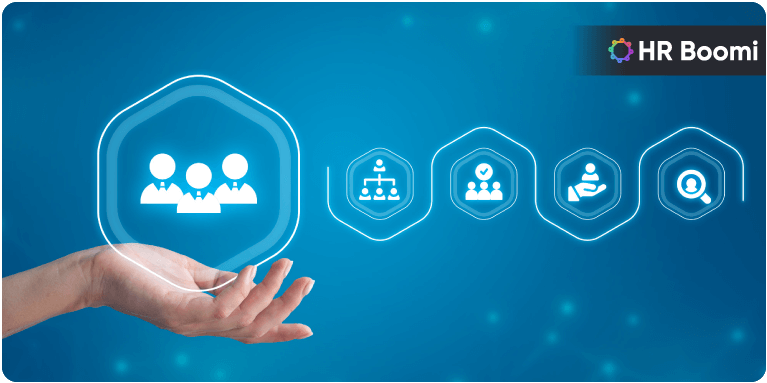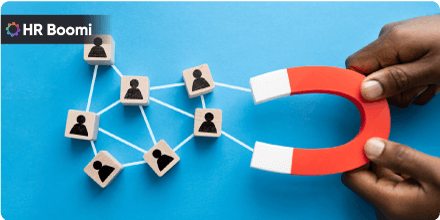
Table of Contents
The quest to outperform competitors is an enduring challenge in today’s rapidly evolving business landscape. Amidst this dynamic environment, one area undergoing a remarkable transformation is Human Resources (HR). Modern HR solutions are not mere tools but rather represent a paradigm shift in how organizations manage their most valuable asset: their talent. These cutting-edge solutions offer a dual promise – they streamline HR operations and empower companies to achieve superior operational efficiency without imposing a substantial financial burden. Recent research bolsters this promise, revealing that companies embracing advanced HR software have witnessed a remarkable increase in productivity, up to 27%, all while concurrently reducing administrative costs by an impressive 22% [source].
This article embarks on a comprehensive exploration of the intricate facets of modern HR software, shedding light on how the reasonable adoption of these solutions can position organizations at the forefront of their industries. By meticulously optimizing processes and expenditures, these HR innovations empower businesses to keep pace with the competition and set new benchmarks while maintaining cost-effectiveness. Essentially, they represent a transformative force that enables companies to chart a course for sustainable success in today’s competitive business landscape.
The Essential Expense Component of HR Activities
Here’s why you should be mindful of your current expenditures. According to APA guidelines, office automation can diminish payroll processing expenses by as much as 80%, a critical component of the HR role. There are significant opportunities to economize and enhance quality across other functions. Staff and HR professionals should identify and record recurrent and routine tasks. Modern HR software provides a comprehensive suite of tools tailored for diverse HR tasks, consolidating them into an all-encompassing solution for the entire organization. This empowers HR teams to focus more on the strategic facets of their role. These tools facilitate the collection, storage, organization, and analysis of various data points, reducing the need for manual intervention. This piece offers insights into optimizing your expenditure and outpacing competitors.
Explore the leading features of a contemporary HR system:
Leave and Attendance Management System
Attendance plays a pivotal role in determining an employee’s salary, serving as a fundamental metric of their contribution to the organization. Historically, employees used physical registers to log their arrival and departure times, a time-consuming and error-prone process. However, with the advent of modern HR software, this cumbersome practice has been replaced by a more efficient and precise method. Today, employees utilize biometric devices to register their entry and exit from the workplace, automatically feeding this data into a centralized database. The system seamlessly computes the total hours worked and the corresponding days payable. Moreover, the software intelligently cross-references leave requests with the company’s established leave policy, ensuring meticulous record-keeping and compliance with minimal manual intervention.
This technological advancement streamlines the attendance tracking process and reduces the scope for errors and discrepancies. Furthermore, it empowers HR teams to swiftly address anomalies or leave requests through digital approvals, simplifying and expediting the entire process. In essence, integrating modern HR software in attendance management not only enhances accuracy but also liberates valuable time and resources that can be redirected towards more strategic HR initiatives, ultimately benefiting both employees and the organization.
Employee Self-Service (ESS) Portal and Travel-Expense Management System
The communication channels between employers and their staff have profoundly transformed in the digital age. Gone are the days of lengthy, paper-based leave applications. With tools like the ESS Portal, employees can effortlessly request leaves by entering key details such as leave type, duration, and reason. This efficient system auto-fills additional required information and swiftly directs the request to the relevant manager for a prompt decision. Moreover, this digital evolution isn’t confined to in-house tasks. Mobile employees, particularly roles like sales representatives, find value in digital tools like the Travel and Expense Management System, streamlining their on-the-go responsibilities.
Performance Management System
Assessing an employee’s productivity is crucial, though traditionally, it’s been a lengthy, intricate, and challenging task. A Performance Management System incorporating KPIs and KRAs can simplify this assessment. Employees regularly log their progress in the HR system. This ongoing assessment aids HR and supervisory figures track progress without devoting extensive hours to creating individual reports. Undertaking this manually would be more than just resource-intensive and also costly. By embracing performance automation, businesses can accelerate their growth and enhance talent deployment, all with negligible added investment.
Payroll Processing Module
This function emerges as the most complex and pivotal among all the facets of HR responsibilities. The tools mentioned earlier serve as the linchpin for collecting crucial data points, encompassing attendance, leave records, performance metrics, and regulatory deductions. These elements, in turn, drive an employee’s gross and net earnings calculation. Traditionally, a substantial chunk of an HR professional’s time has been consumed by the intricacies of payroll tasks. However, with the introduction of automation, this precious time is reclaimed, allowing HR to redirect its focus towards critical aspects like nurturing employee growth, improving retention rates, and bolstering recruitment efforts. This optimizes internal operations and frees up resources and hours that can be channeled into enhancing organizational infrastructure and nurturing employee welfare programs, thereby fostering a holistic and thriving workplace.
Your Piece Of The Pie
In the rapidly changing business environment, staying competitive is more than just a goal—it’s necessary. Traditionally seen as a back-office function, human resources has emerged as a strategic powerhouse, with modern HR solutions at its core. As illustrated, these tools streamline tasks such as attendance, communication, performance assessment, and payroll processing and catalyze operational efficiency and cost savings. From the reduction in payroll processing expenses to the digitization of employee-employer communication, these systems exemplify the merger of innovation with functionality. By harnessing the capabilities of advanced HR software, businesses are not only optimizing their current operations. Still, they invest in their future, ensuring sustained growth and leadership in their respective industries. In essence, the right HR solutions allow organizations to soar to new heights, all while ensuring financial prudence and operational excellence.
Recent Posts
-

In-house vs. Outsourced Payroll: Pros and Cons
-

Mastering Talent Retention: A Corporate Challenge
-

What is employer branding and how to apply it in your company?
-

The Significance of Employee Communication Within
-

What is time management and why is it important?
-

Net salary: what is it and how is it calculated?
-

Enhancing Employee Experience: Strategies for Excellence
-

10 Best Gifts to Boost Sales Channels
